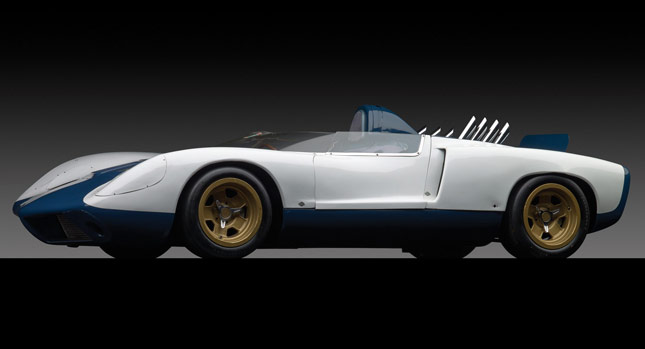Besides creating the Corvette legend, GM designer and engineer Zora Arkus-Duntov was constantly testing new ideas and technologies. One of his dreams was to create an all-wheel drive mid-engined racing car that would make Chevrolet a competitor on the world’s greatest racetracks for the likes of Ferrari and Ford’s GT40.
After turning the first-generation Corvette from a cruiser into a true sports car by giving it a powerful small-block V8 engine, Duntov set out to develop a mid-engined all-wheel drive sports car, fuelling rumors that the second-generation Corvette will have a mid-mounted engine.
That experimental car was called Chevrolet Engineering Research Vehicle II (CERV II) and its most important characteristic was the four-wheel drive system with torque vectoring. The car followed another experimental car called the Chevrolet CERV, which was completed in 1960 and was aimed at open-wheel racing. The CERV resembled an IndyCar and featured a light 500hp 377-cubic inch small block V8 that was also used on the CERV II.
Duntov wanted the CERV II “to incorporate all the features necessary to make it a successful contender, not only in sprints but in such long distance events as Le Mans and Sebring.” He planned to build six cars, originally designated the G.S. 2/3, that would allow selective usage as two-wheel drive (G.S. 2) or four-wheel drive (G.S. 3). Using the Grand Sport label and frequent references to the Corvette suggests Duntov thought of a familial relantionship with the series production sports car.
The CERV II featured a fiberglass body, titanium hubs, conecting rods, valves and exhaust manifold, which made it weigh close to the targeted 1,400 pounds (645 kg). It had an unconventional four-wheel drive system that consisted of an 11-inch Powerglide torque converter and clutchless two-speed manual gearbox that hanged from the rear of the car and a second 10-inch Powerglide torque converter at the front of the car, with a second semi-automatic transmission.
Duntov wanted 35 percent of the power to be delivered to the front end at low speed and 40 percent at high speed. In tests, the CERV II reached speeds of up to 212 mph (341 km/h) and was capable to accelerate from 0 to 60 mph (96 km/h) in just 2.8 seconds.
Unfortunately, Duntov’s plans for the CERV II were stopped in 1964, when GM informed him it will not enter racing with the car. The CERV II continued to be used as a research vehicle and in 1969, it was fitted with a new all-aluminum 427-cubic inch ZL1 V8. The 550hp engine is the one the car has now, with the current weight of the CERV II standing at 1,848 lbs (838 kg).
The car is functional and almost entirely original and is among the most important Corvette development vehicles in private hands today. The CERV II will be auctioned on Thursday, November 21, 2013 by RM Auctions, at an undisclosed starting price.
By Dan Mihalascu
PHOTO GALLERY

















